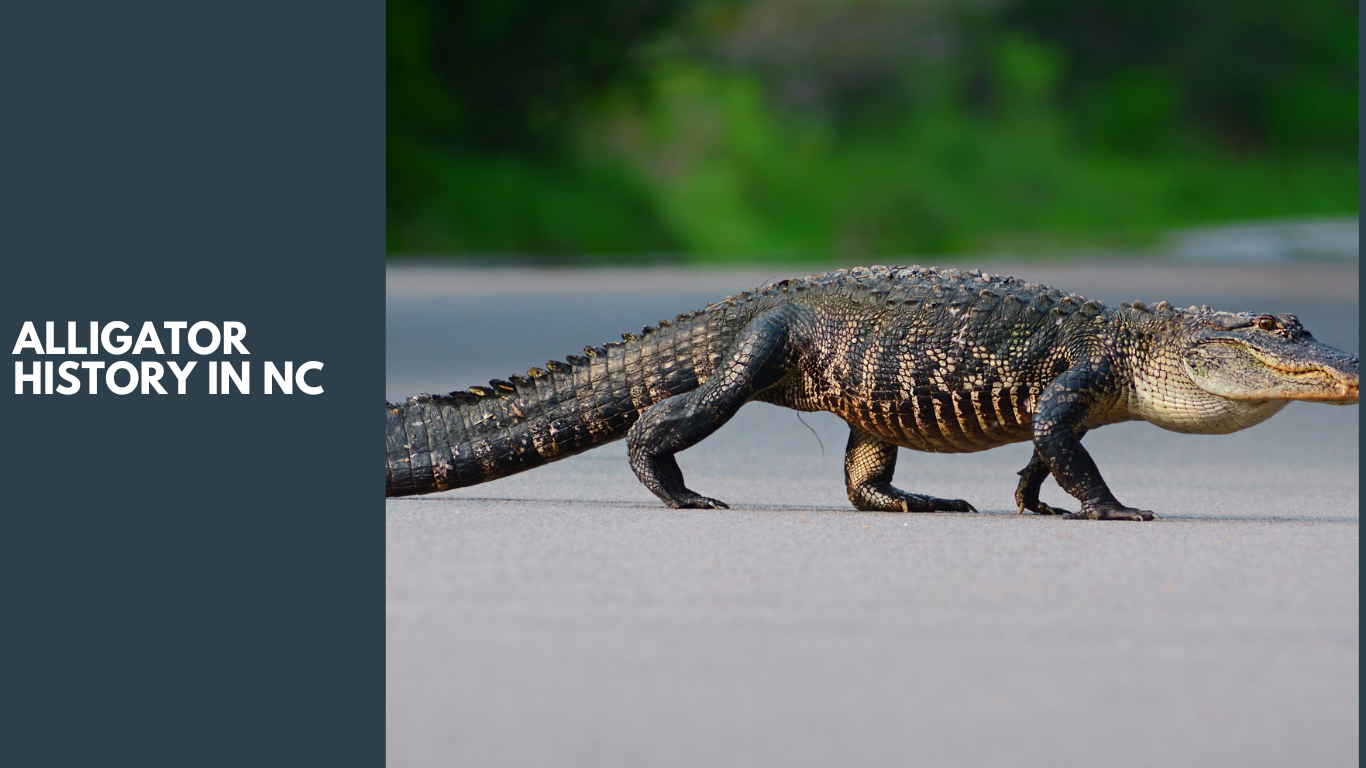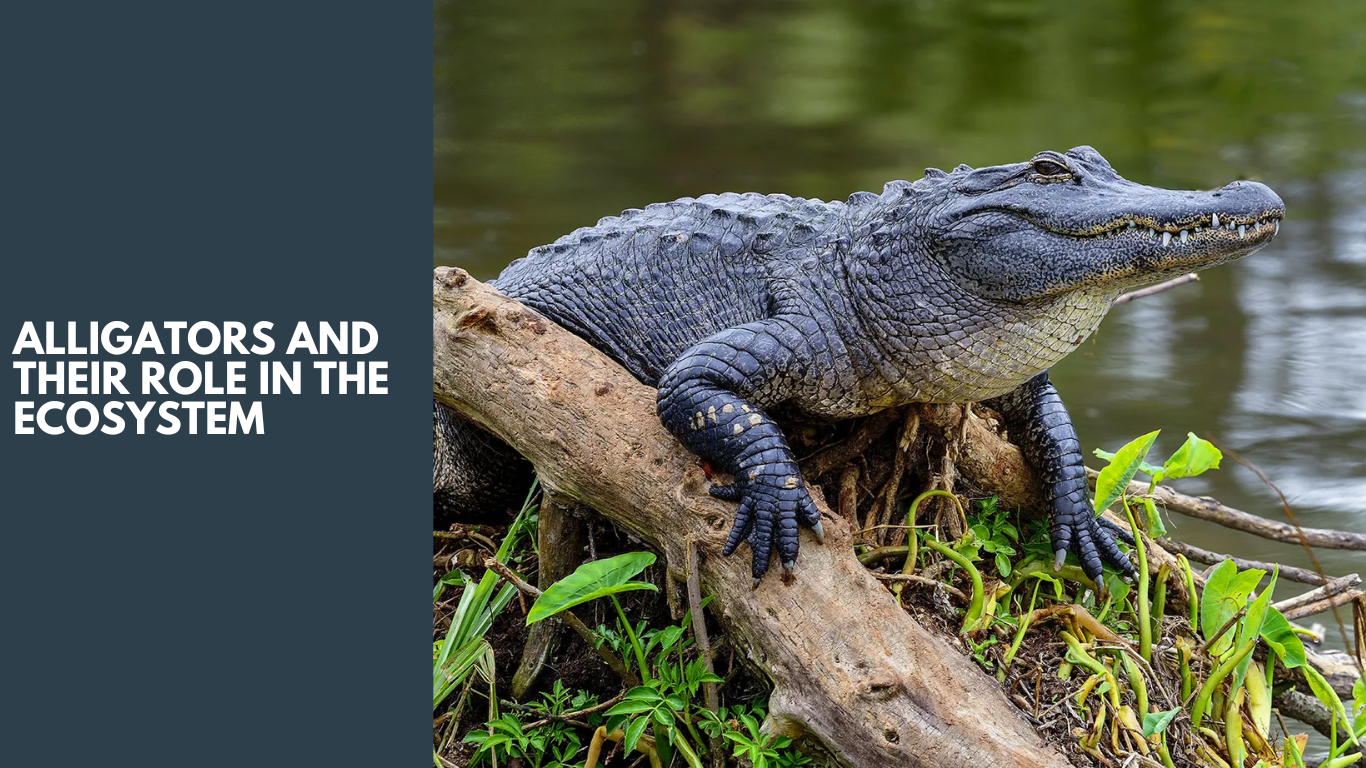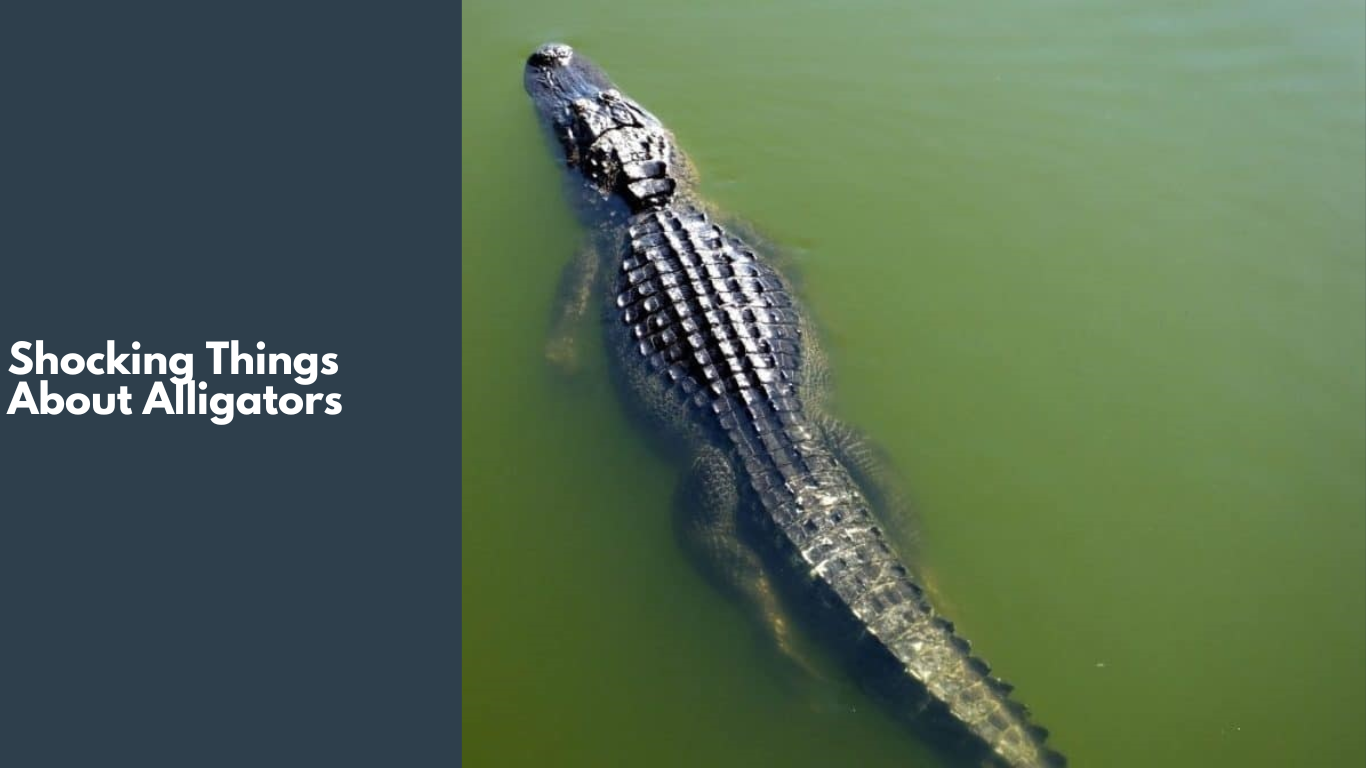Is it possible in North Carolina to find alligators? Yes, very much so! We’ll delve into the intriguing world of American alligators in North Carolina, including their habitat, behavior, and ecological importance in the state.
Because of its abundance of natural resources, North Carolina has long captivated outdoor enthusiasts and environmentalists. A varied habitat, on the other hand, attracts a wide variety of animal species. These include alligators, which are reptile predators that may arouse curiosity as well as terror. But are there any alligators in North Carolina?
North Carolina has been home to alligators since prehistoric times. The American alligator (Alligator mississippiensis) is the only species of alligator found in the state. This article’s subject is the enormous American alligator, a reptile that may reach lengths of 14 feet and weigh more than 500 pounds. This species may be found in the southern United States, from North Carolina to Florida, as well as in Texas and Oklahoma. Alligators can be found on the coast of North Carolina, although they are mostly linked to the bayous and marshes of the Deep South.

Click Here if you want to read more like this
Alligators are vital to the ecology of North Carolina because they keep marshes and wetlands in balance. Since they are the top predators in the food chain, they eat fish, turtles, birds, and mammals. Small ponds and marshes can provide a habitat for various creatures, and alligators have been observed digging and procreating in these areas.
Alligators are valuable to the ecosystem, but if they are not handled with care and respect, they may be fatal to people. It’s critical to comprehend wild animals’ behavior and take suitable action when you come across them.
The American alligator will be discussed in this article, along with its traits, behavior, life cycle, and place in the ecology of North Carolina. We’ll also talk about safety precautions and management strategies, such as laws governing alligator hunting and environmental preservation. You’ll know more about these unusual species and their place in North Carolina’s ecosystem by the conclusion of this essay.
ALLIGATOR HISTORY IN NC
Alligators have lived in North Carolina for countless years. Fossil data indicate that alligators were common in the state between 5.3 and 2.6 million years ago, during the Pliocene era. However, during the Ice Age, when glaciers covered much of the state, the number of alligators in the state fell precipitously.
In the early 1900s, many strategies were used to restore alligators to North Carolina, including relocation projects and the release of captive species. Alligators were still considered rare in North Carolina in the 1950s and 60s, with just a few dispersed populations in the southern part of the state.
The 1970s saw a rise in North Carolina’s alligator population. Conservation measures like preserving marsh habitat and limiting hunting were partially to blame for this. Land use changes also had a role, allowing wetlands that had previously been cultivated or drained to revert to their natural condition.
There are now about 1,000 alligators in North Carolina, most of them are found in the southern part of the state. Since alligators play a significant role in the natural environment of the state, continuous efforts are made to conserve and monitor their population.
WHERE CAN I FIND ALLIGATORS IN NC?
The southern region of the state, especially the coastal plain, is home to the majority of North Carolina’s alligator population. Alligator populations thrive in the variety of wetland environments found here, such as ponds, marshes, and swamps.
The southern region of North Carolina, which includes the counties of Brunswick, Columbus, New Hanover, Onslow, Pender, and Robeson, is home to some of the state’s most frequent alligator sightings. A few alligators may be seen living in Gates County’s Merchants Mill Pond, which is featured at the top.
The Green Swamp and the lower Cape Fear River basin are both parts of the Albemarle-Pamlico Peninsula. Alligators have also been observed in other parts of the state, most notably the Neuse River basin.
ALLIGATORS AND THEIR ROLE IN THE ECOSYSTEM OF NORTH CAROLINA

In North Carolina’s environment, alligators are very essential, especially in wetland areas including ponds, marshes, and swamps. As apex predators, alligators assist in controlling the numbers of fish, turtles, and birds, among other species.
Furthermore regarded as keystone species, alligators significantly affect the general well-being and biodiversity of their surroundings. For instance, by establishing and preserving breeding grounds, digging holes that fill with water and serve as a habitat for other animals, and preventing the spread of invasive plant species, alligators contribute to the preservation of the structure and function of wetland ecosystems.
Additionally, alligators are essential to the cycling of nitrogen in wetland habitats. Because they eat food and excrete waste in different places across their environment, alligators aid in the distribution of nutrients. The development and well-being of plants and other species within the environment are significantly impacted by this.
In North Carolina, alligators have cultural and economic value in addition to their ecological significance. The alligator population in the state attracts a lot of visitors who come for hunting, fishing, and wildlife observation as recreational pursuits. Alligator-focused tourism has the potential to bring in a sizable sum of money for nearby towns.
Alligators are vulnerable to several dangers despite their significance to North Carolina’s environment, including habitat loss and degradation, poaching, fishing gear accidents, and boat strikes. Therefore, maintaining and managing the alligator populations in the state continues to be a top responsibility.
DIET FOR ALLIGATORS
Since alligators are carnivores, their primary food source is meat. They eat a wide range of prey, including as fish, birds, mammals, turtles, snakes, and invertebrates like crabs and prawns.
Because alligators are opportunistic feeders, they will consume whatever food that is readily available to them at any given time. Additionally, they wait for their prey to approach them before attacking, making them ambush predators.
Alligators hunt using a range of techniques to bring down their prey. For example, they could wait for prey to get close enough to grab hold of them while sitting at the side of a pond or riverbank, hidden by their surroundings. Additionally, when swimming or cruising through the water, they could aggressively chase prey.
Alligators can crush and rip apart their prey because of their strong jaws and fangs. They can also obtain nourishment from even the most difficult prey because of their robust digestive systems.
Remember that alligators are opportunistic scavengers as well as skilled predators. This implies that they will consume carrion or animal remains if they come to them.
ALLIGATOR SAFETY IN NORTH CAROLINA
Alligators may be entertaining to watch, but it’s vital to keep in mind that they are wild creatures that might endanger people. Although alligator attacks are rare, they can happen sometimes, so it’s important to understand the hazards and take the necessary safety measures when in or near alligator territory.
The following precautions should be taken when engaging with alligators.
- Determine your distance: You must always keep a safe distance between yourself and alligators since they may move swiftly both on land and in the water. Keep a minimum of 50 feet between you and alligators in the wild, and if you do come across one by chance, back away gently and carefully.
- Avoid feeding alligators: Not only is it against the law in most jurisdictions, but feeding alligators may be dangerous. Feeding alligators can make them less fearful of people, which would make them more likely to attack.
- Watch your surroundings: at dawn and dusk, when alligators are most active, use extreme vigilance. In addition, alligators may be found in a variety of habitats, including marshes.
- Dogs must be kept on leashes and under control while in or near alligator habitat since alligators are known to eat small animals.
- It is not advised to swim in an alligator’s natural habitat. If you must swim in an alligator-infested region, stick to the beach or swim during the day.
- When alligators attack, give a fierce defense. Usually, an alligator will release a victim who retaliates.
- Keep in mind that alligators are an essential component of the environment in North Carolina, and you should respect and observe them from a safe distance. By taking the right precautions, you may lessen the likelihood of an alligator encounter—which might be lethal.
3 Shocking Things About Alligators

You might be interested in learning some surprising facts about alligators, which are fascinating animals with unique characteristics. Here are three gator-related facts that may surprise you:
01. Temperature Dependent Gender Determination:
The sex determination of alligators is temperature-dependent (TSD). The gender of the hatchlings is influenced by the temperature at which the eggs are incubated. During incubation, warmer temperatures often produce male alligators while cooler temperatures produce females. The dynamics of the alligator population are impacted by this environmental factor.
02. Extremely Powerful Jaws:
Alligators are well recognized for their vicious bite and powerful jaws. The striking thing is the amount of power they can muster to close their jaws. Alligators may shatter bones and shells with their incredibly strong jaws. Their ferocious jaw closure is made possible by muscles that are also required for grasping prey and dismembering food. They are therefore the top predators in their respective habitats.
03. Survival Tips in Cold Weather:
Because they are ectothermic, alligators depend on outside heat to regulate their body temperature. The fact that alligators have developed a special adaptation to survive in cold climates is astonishing. They may go into a state called brumation in cold weather, which is comparable to mammal hibernation. They can even withstand being partially frozen in ice if required. They also slow down their metabolic processes and reduce their activity levels. They can survive in places where temperatures can drop significantly because of their adaptive behavior.
SOURCE
Conclusion
And last, alligators are a fascinating and significant component of the ecology of North Carolina. Although alligator attacks on people are rare, they can be prevented by adhering to simple safety precautions.
If you follow the above safety recommendations, be alert about your surroundings, and keep a safe distance from alligators, you may safely watch and appreciate these beautiful animals in their natural habitat. When in or near an alligator’s environment, always remember to prioritize your safety while showing them respect and admiration.

[…] Also Read: Do alligators inhabit North Carolina? […]